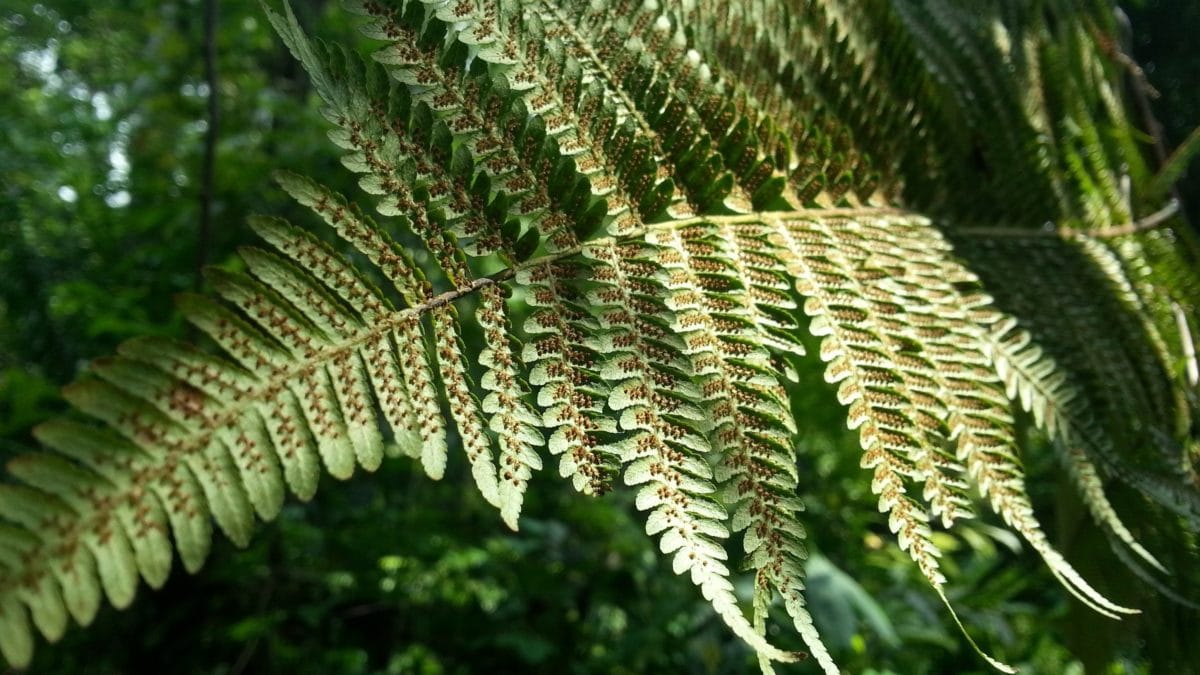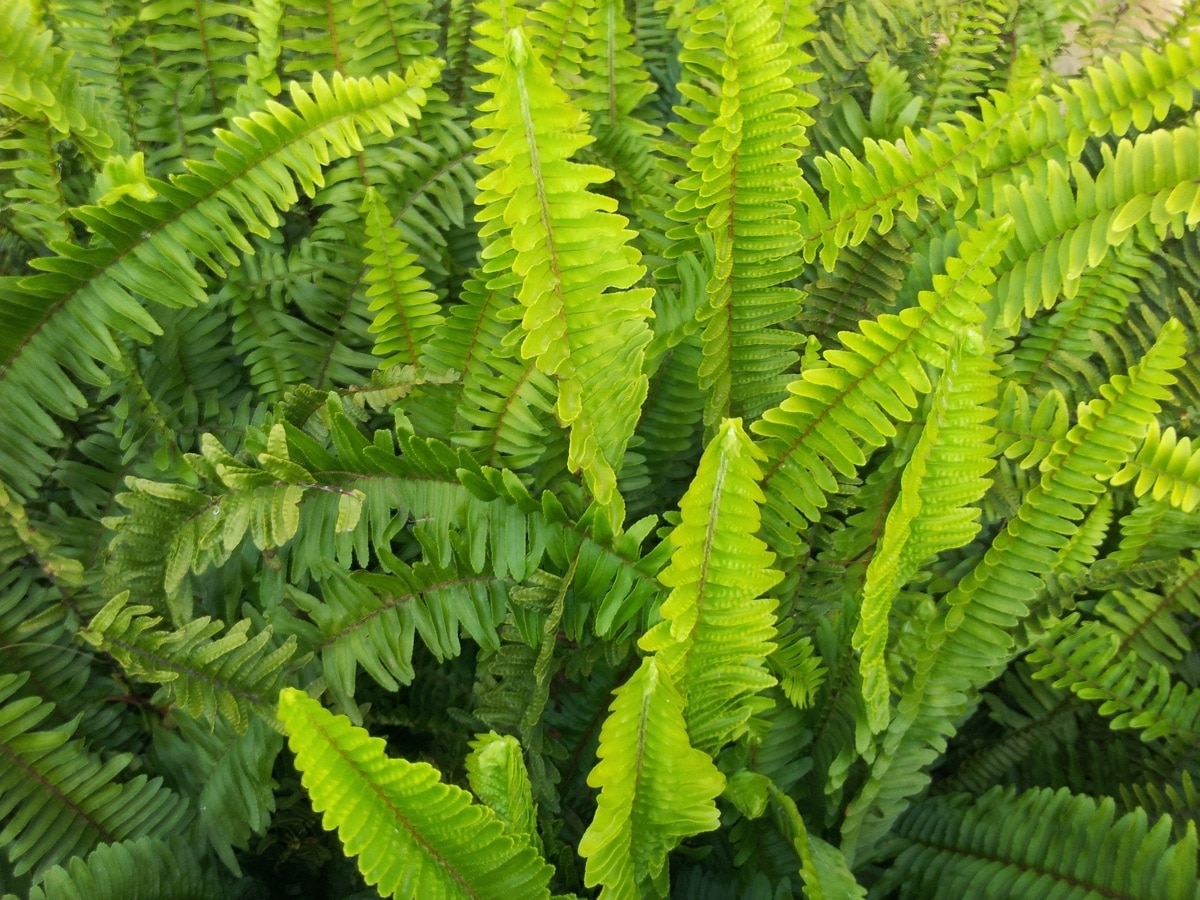
Ferns are plants that live in shade, and in places where there is very high humidity.. Sometimes we can even find them in areas where it rains little, but nevertheless, being close to the sea or rivers, the dew allows them to grow without too many problems, which is exactly what happens in the Balearic Islands, for example, where the drought can become very serious, but where several native species live, such as the Dryopteris pallida.
They are so, but so demanding of humidity, that when they lack them they have a hard time. Therefore, when we dare to buy one, we have to take care of them in the best possible way to prevent them from spoiling. However, once our fern has brown leaves, what can we do to get it back?
Why can fern leaves turn brown? There are several causes, so let's get to know them all so that you can get an idea of what could have happened to your plant, and what you can do to make it healthy again:
You are burning from direct sun or light
The fern is a very, very sensitive plant that cannot stand direct sun. That's why, if it is outdoors, it should be placed in the shade, and if it is indoors, it should be placed in a room where there is a lot of light, but where it will be located away from the windows. This is important, because if it were placed right in front of the glass, the magnifying glass effect would occur, and the plant would suffer burns.
But when that happens, We will only see damage on those leaves that have been more exposed; that is, those that are more protected will remain healthy. Said damage will be yellow and/or brown spots that appear from one day to the next, and that get bigger as the plant spends more time exposed to direct light.
The solution is simple: just we have to change location. The brown leaves will continue to be that color, and the yellow ones will also turn brown and dry up, but what matters here is that the healthy ones continue in that state so that the plant has energy and can produce new ones.
It is exposed to drafts
Air currents can be generated by electrical devices, such as fans, air conditioning, etc., or by the rotating movement of the planet itself in the case we are talking about the wind. Ferns need to be in a ventilated area, whether they are going to be inside or outside the house, but it is important that you know that they do not support strong and/or constant air currents. That is, if we put them, for example, in a room where we have the air conditioning on all the time and/or if we turn it on every day, the leaves will turn brown.
As would happen if they were burning, we will also see damage only on the most exposed leaves. First the tips will turn brown, and then the rest of the leaf surface. And it is that these air currents dehydrate them, since they dry the leaves and with it, although the roots do what they can to pump water as fast as they can, the plant does not have time to take advantage of it, since it is lost.
Therefore, they must be placed in a place that, yes, is well ventilated, but always protected from drafts, especially if they are strong and/or constant.
ambient humidity is low

Ferns have a hard time when the relative humidity of the air, or ambient humidity, is low (below 50%). But that is just what is usually found in homes, as well as in those areas that do not receive the influence of the sea or/or any river. The damage they suffer in these conditions is the same as when they are exposed to air currents, namely: the tips start to turn brown, and sooner rather than later all the leaves are spoiled. To avoid this, we will spray the plants with rainwater, or one that is suitable for consumption once or twice a day.
But beware: if it turns out that the humidity is actually very high and you spray your ferns, what you will do is put them at risk of disease caused by fungi, such as mildew or phytophthora. For this reason, before doing anything, you should check the degree of humidity, either by looking for information on the Internet, or better yet, by buying a weather station like is from here.
It's not watering well
Watering is necessary, but it is even more so to do it only when it touches. Ferns grow in land that is always a little moist, but not flooded, so that their roots do not tolerate excess water, but neither do they lack it. Therefore, we have to know what are the symptoms of excess or lack of irrigation in this type of plants:
- Excess of water: Older leaves turn yellow and brown in a short time. The problem then spreads to other leaves as the roots choke and die.
- Lack of water: the youngest leaves are the ones that suffer first: they turn brown, from the tip inwards. Also, we can see and feel the dry land.
Therefore, we have to act fast. To solve the first problem, what we will do is suspend irrigation and treat it with systemic fungicide as No products found. so that the fungi do not do (more) damage. Likewise, if it is in a pot, we have to make sure that it is in one with holes in its base, and if it has a plate under it, we will have to drain it in case it has water.
If, on the other hand, he is thirsty, we will pour plenty of water on him. until you see that the earth is moist. If it is in a pot, we will submerge it in water for a few minutes. And from then on, we will water more often.
Ferns generally they have to be watered several times a week during the summer, but the rest of the year it is important to space out the watering because the soil takes longer to dry.
We hope that these tips will help you to recover your fern with brown leaves.